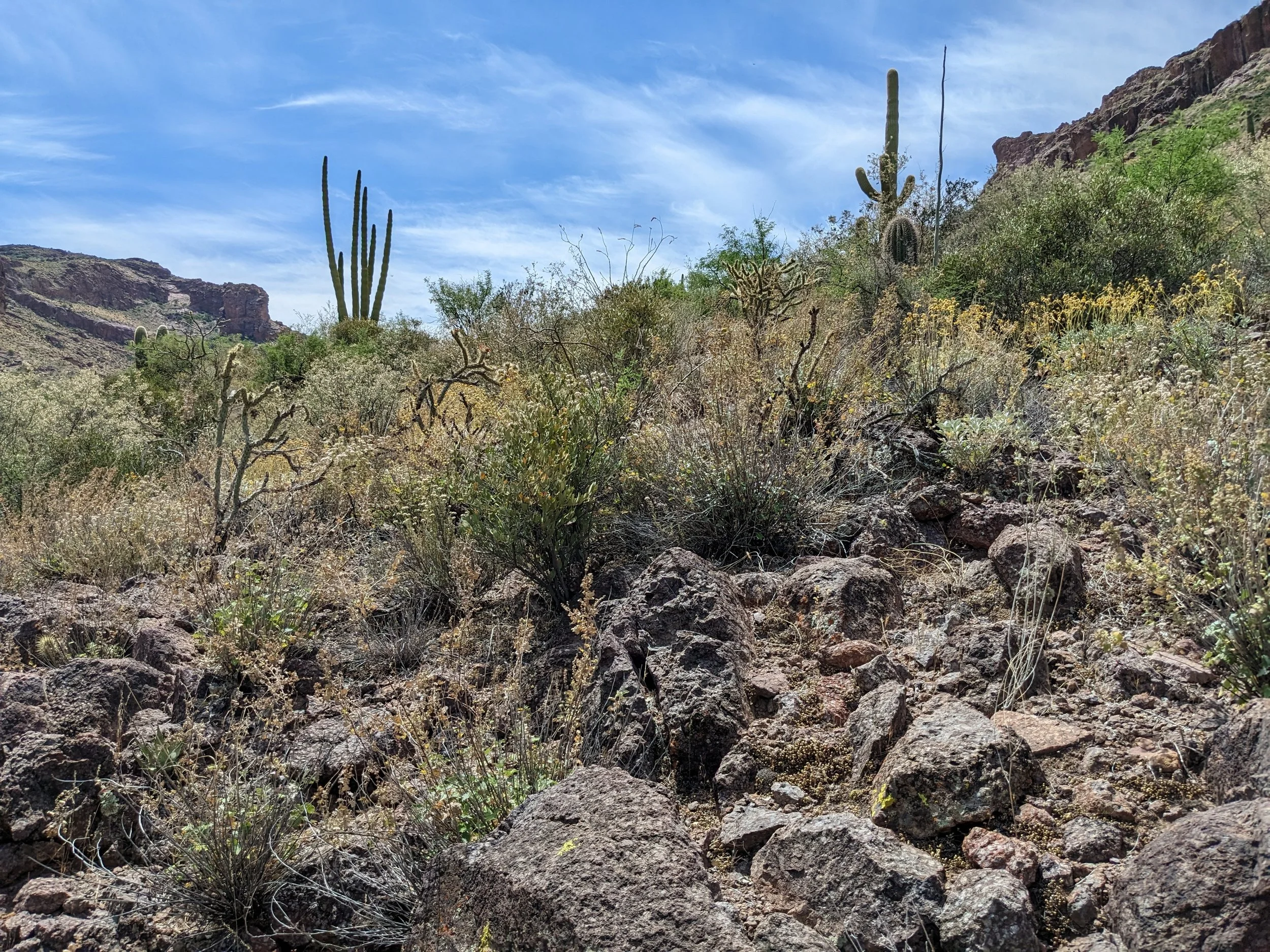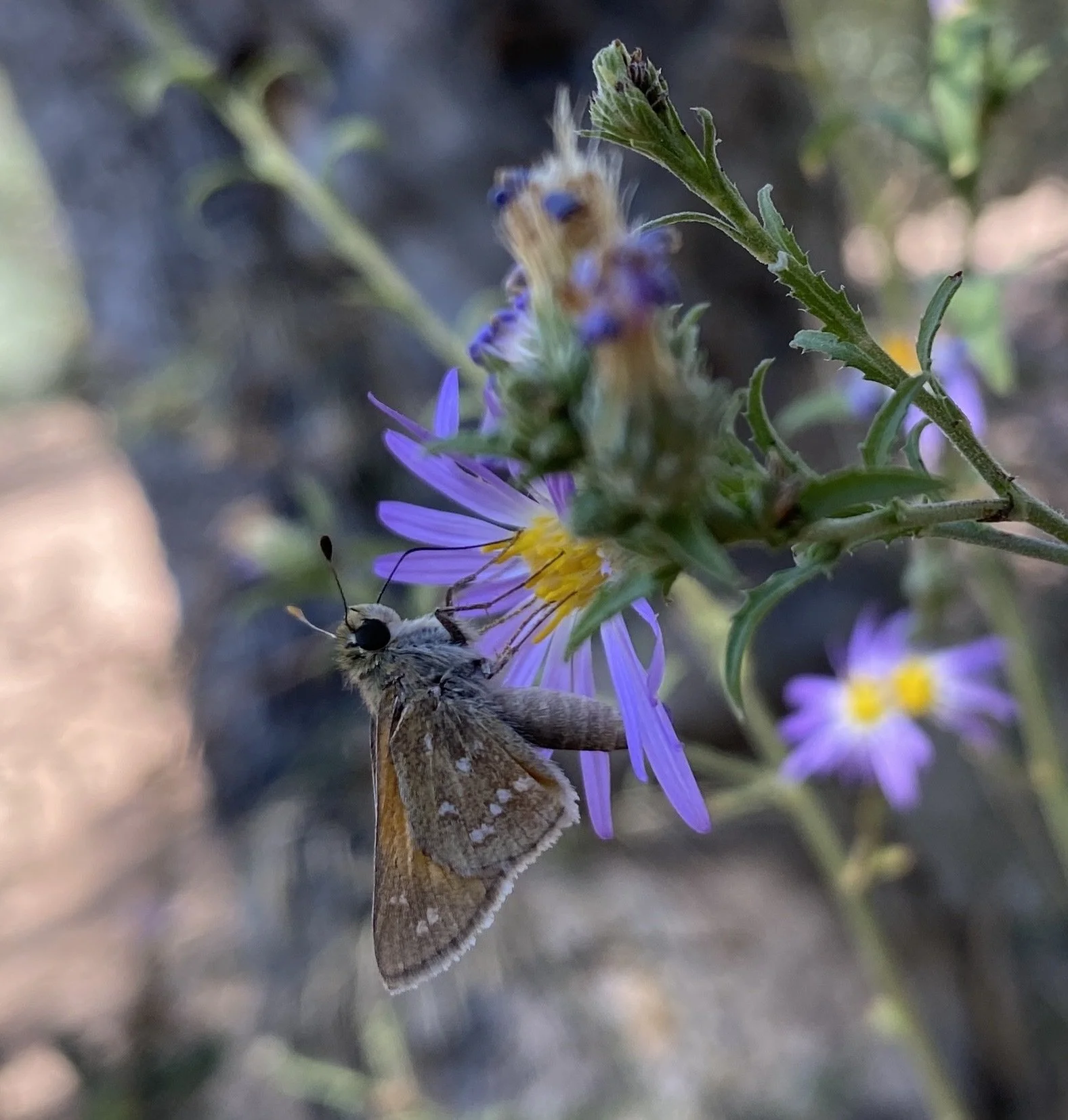Study Systems
Selaginella of the Sonoran Desert
A local group of lycophytes with some of the smallest plant nuclear genomes (smaller than Arabidopsis!). These plants desiccate during dry periods and resurrect when it is wet again. They can be resurrected from collections, including 100 year old herbarium sheets! We are working on two different local species complexes that contain hybrid and polyploid species. These occur throughout the Sonoran Desert and the Madrean Sky Islands. The Sky Islands create natural barriers to gene flow among populations and provide interesting evolutionary experiments for us to explore. Focal species currently include S. arizonica, S. eremophila and their diploid and polyploid hybrids as well as the allotetraploid S. rupincola. We use these species to study the population genomics of hybridization and polyploidy in plants.
The allotetraploid lycophyte Selaginella rupincola growing among the boulders at Cochise Stronghold in the Dragoon Mountains southeast of Tucson, Arizona. Image credit M. S. Barker.
Selaginella arizonica X eremophila hybrid zone at Alamo Canyon in Organ Pipe National Monument.
Brassica Triangle
The plants of Brassica are well known as the "dogs" of the plant world because of their extraordinary morphological diversity arising from nested polyploidy events. We study how these ancient genome duplications contributed to the diversity of Brassica crops including turnip, Chinese cabbage, canola, broccoli, cauliflower, kale, and cabbage. The famous "Triangle of U" elegantly illustrates relationships among diploid and allopolyploid species, providing an ideal system for understanding how polyploidy creates the raw material for crop domestication. Our research focuses on how retained gene duplicates from ancient whole genome duplications have been shaped by artificial selection to produce the remarkable diversity of forms we see in modern agriculture.
The famous “Triangle of U” hypothesis of relationships among the diploid and allopolyploid species of Brassica. Originally proposed by Woo Jang-choon. Image from wikipedia.
Xanthisma and Machaerantherinae: Extreme Chromosome Evolution
The Machaerantherinae subtribe of Asteraceae provides exceptional models for understanding chromosome evolution in flowering plants, with many species native to the Tucson area and broader Sonoran Desert. Xanthisma gracile represents one of the most extreme examples of chromosome number reduction known, evolving from the ancestral n = 9 down to n = 2 through sequential chromosome fusion events. But this dramatic reduction is not unique—across the local Machaerantherinae, we see repeated parallel evolution of chromosome number changes and diverse mechanisms of genome reorganization. We study Xanthisma alongside related genera in our desert backyard to investigate how these dramatic chromosomal changes impact population genetics, gene flow, and speciation processes. These local desert-adapted plants offer unique insights into the relationship between genome organization and environmental adaptation, revealing how fundamental changes in chromosome structure can occur while maintaining viable, reproducing populations.
Xanthisma spinulosum growing outside a gym in Tucson, Arizona.
A Dieteria sp. being visited by a skipper in the White Mountains of Arizona. Credit: Geoff Finch
Tree of Life: Big Data Approaches to Plant Evolution
We investigate evolutionary patterns across the plant tree of life using integrated datasets spanning genomics, ecology, and biodiversity. Working with genomic data from hundreds of species, global chromosome number databases, ecological niche data, and biodiversity repositories, we develop computational approaches to understand plant evolution and diversity at large scales. This big data approach allows us to integrate information from herbarium specimens, field collections, genome sequences, and ecological databases to explore fundamental questions about how plants have diversified across environments and through geological time. By combining these diverse data types, we can test hypotheses about plant evolution that span from molecular mechanisms to macroevolutionary patterns, revealing the processes that have generated the remarkable diversity of plant life on Earth. Research and training across these data sets and scales is provided by our CAMBIUM NRT program.




